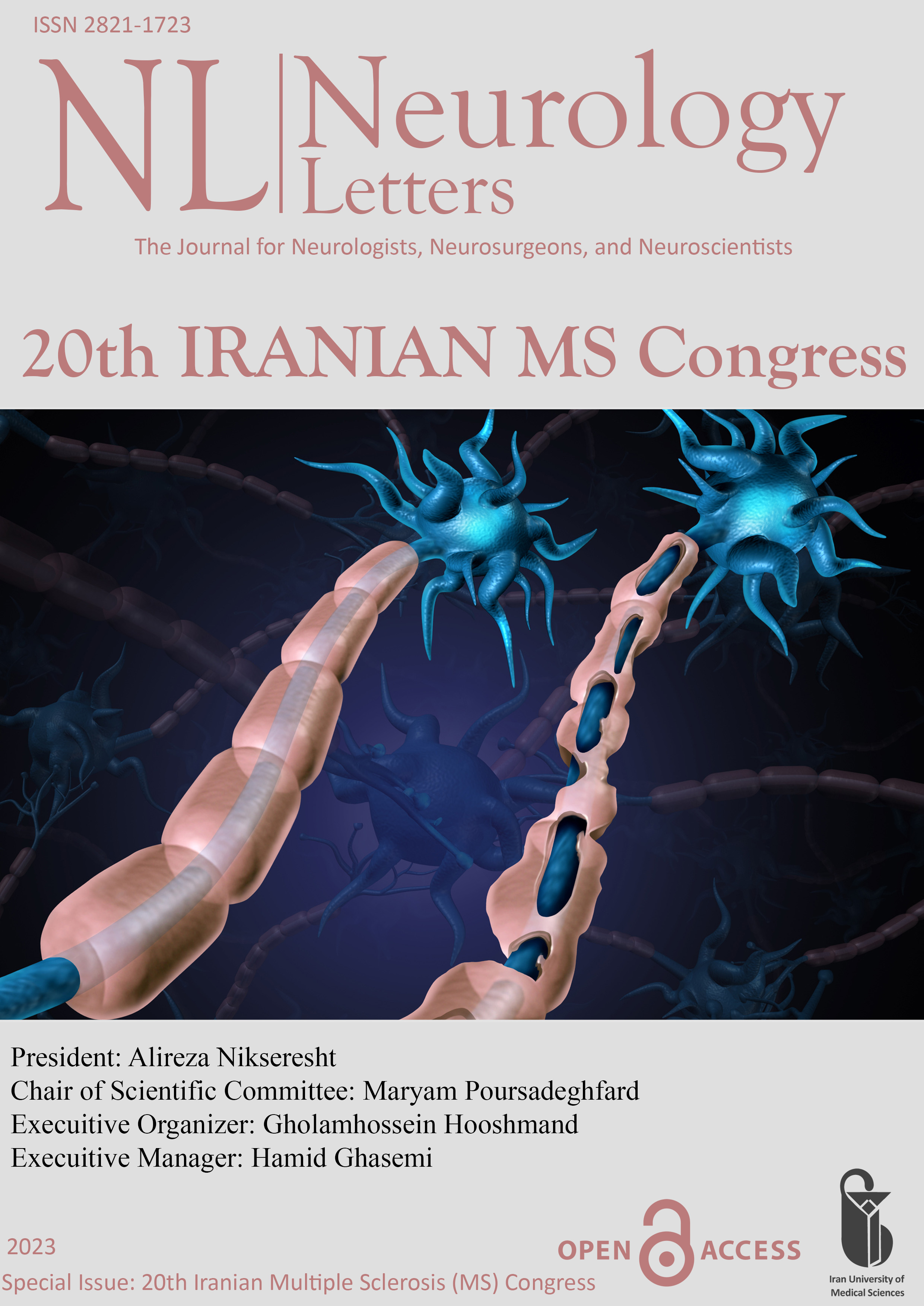Diagnosis of myelin oligodendrocyte glycoprotein antibody-associated disease: International MOGAD Panel proposed criteria (ORP-22)
Document Type : Oral Presentation
Author
Neurosciences Research Center, Tabriz University of Medical Sciences, Tabriz, Iran
Abstract
Patients with Myelin Oligodendrocyte Glycoprotein (MOG)-IgG present with isolated optic neuritis or transverse myelitis, acute disseminated encephalomyelitis (ADEM), brainstem or cerebellar features, or cerebral cortical encephalitis. Unlike Multiple Sclerosis (MS) and AQP4-IgG-seropositive Neuromyelitis Optica Spectrum Disorders (NMOSD), in which multiple clinical attacks characterize relapsing forms of the disease, individuals with MOG antibody-associated disease (MOGAD) can have either a monophasic or relapsing course. Studies from multiple countries support MOGAD as a global disease affecting people of all ages. MOGAD incidence is 1·6–3·4 per million people per year, and prevalence is estimated at 20 per million (95% CI11–34). Optic neuritis is by far the most common onset feature, particularly among adults, while Acute Encephalomyelitis (ADEM) with or without concomitant optic nerve involvement is the typical first manifestation in children, particularly before the age of 11 years. Transverse myelitis is another common presentation. Less common presentations include cerebral cortical encephalitis (often with seizures), brainstem and cerebellar demyelinating attacks, tumefactive brain lesions, cerebral mono-focal and polyfocal CNS deficits associated with demyelinating lesions, cranial neuropathies, and progressive white matter damage (leukodystrophy-like pattern). In contrast to AQP4-IgG-seropositive NMOSD and MS, no marked sex or racial predominance has emerged in populations with MOGAD. A panel strongly endorses serum testing for patients with suspected MOGAD using cell-based assays that use full-length human MOG to detect MOG-IgG. MOG-IgG are IgG1, and the panel recommends testing with IgG-Fc, an IgG1 secondary antibody, or an IgG (heavy and light) secondary antibody if externally validated in-house assays are used. Fixed cell-based assays are a reasonable alternative when live cell-based assay testing is unavailable, with the caveat that sensitivity and specificity of fixed cell-based assays are lower than cell-based assays. However, antibody titers are often not consistently provided by testing centers and reproducibility between testing centers has not been systematically investigated for commercial cell-based assays. ELISA is not recommended for MOG-IgG measurement owing to low sensitivity and specificity. The panel proposes criteria for clear positive and low positive fixed and live cell-based assay results. For live assays, they recommend that clear positives are defined as at least two doubling dilutions above the assay cutoff, or above the assay-specific titers cutoff, or flow-cytometry ratio cutoff. Fixed assays are considered clear positive by titers greater than or equal to 1:100. Fixed or live assay results are considered to be low positives if in the low range of the individual live assay or if titers are at least 1:10 and less than 1:100 for fixed cell-based assays. Patients with one of the core clinical attack types and clear positive MOG-IgG test results in serum measured by fixed or live cell-based assay can be diagnosed with MOGAD. Patients with low positive serum MOG-IgG titres measured by fixed or live cell based assay, patients with serum results reported as positive on fixed cell-based assay without titer, or seronegative patients with clear positive CSF MOG-IgG test results who present with one of the core clinical attack types (Optic neuritis, Myelitis, ADEM, Cerebral monofocal or polyfocal deficits, Brainstem or cerebellar deficits, Cerebral cortical encephalitis often with seizures) are also required to have at least one of the supporting clinical or MRI features (Optic neuritis with Bilateral simultaneous clinical involvement, Longitudinal optic nerve involvement (> 50% length of the optic nerve), Perineural optic sheath enhancement, Optic disc oedema or Myelitis with Longitudinally extension,Central cord lesion or H-sign, Conus lesion or Brain, brainstem, or cerebral syndrome with Multiple ill-defined T2 hyperintense lesions in supratentorial and often infratentorial white matter, Deep grey matter involvement, Ill-defined T2-hyperintensity involving pons, middle cerebellar peduncle, or medulla, Cortical lesion with or without lesional and overlying meningeal enhancement) to be diagnosed with MOGAD. Patients should be diagnosed with MOGAD only after other diagnoses that better explain their features have been excluded.
Conclusions: These proposed criteria rest on the presence of MOG-IgG as a fundamental inclusion criterion, accompanied by clinical presentations identified as being associated with MOG-IgG. Future research will be the validation of these proposed criteria in prospective pediatric and adult cohorts of patients with acquired CNS inflammatory demyelination.
Keywords
 Neurology Letters
Neurology Letters
